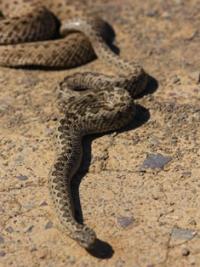You are here
Deserts of Turan lowland and Balkhash.



Observation excursion in desert Kazakhstan.
“Two things control men`s nature, instinct and experience”
Blaise Pascal.
Group inclusive tour in Karaganda.
Issues of the typology of the deserts of Central Asia were developed in the last century. I. Borschov (1865) in his work on the botanical geography of the Aral-Caspian region identified five areas, among them - the area of clay deserts, saline deserts, hilly sands.
In the classic work "Essays on the Fergana Valley" (1882) A.F. Middendorf distinguished rubble deserts, saline march, sandy and loess soil spaces. L. S. Berg in his work “Forms of Russian Deserts” identified four main types of deserts in Central Asia: sandy, clayey, saline march and rocky deserts, considering sandy deserts to be the most common type.
It should be noted that at the time when this classification was published, the concepts of “saline march” and “saline land” were not distinguished in soil science. In fact, by the saline march by the deserts of Berg, the saline march deserts should be meant, distinguished by this name by A. F. Middendorf.
Under the conditions of a sharply continental desert climate, the substance becomes especially important in the life of the landscape, since with extremely limited amount of moisture, the hydrological regime of the soil and the growing possibilities of plants are determined by such soil properties as water permeability, capillarity, ability to absorb moisture from the air, etc.
It is not surprising, therefore, that an attempt to distinguish the types of desert according to botanical grounds led to a similar classification. E. P. Korovin (1934) distinguished among the types of deserts of Central Asia the ephemeral desert with the domination of plants of the ephemers, sandy with the domination of plants, gypsum with the domination of gypsums and saline with the domination of halophytes.
The gypsum desert according to E. P. Korovin corresponds to the rocky desert according to Berg, and the ephemeral - to clay, more precisely, to loess clay desert.
Although ephemeral plants are found almost everywhere in the deserts of Central Asia, they are especially widespread on the loess and clay soils of the southern zone of the Central Asian deserts, which is associated with the special climatic conditions of this zone, according to B. P. Alisov and other researchers, to the subtropical belt.
The climatic differences of the northern and southern desert zones of Central Asia, vividly shown in the book by D. N. Kashkarov and E. P. Korovin “Life of the Desert” (1936), served as the basis for these authors to distinguish two climatic types of deserts in Central Asia: northern and southern, or Сentral Asian, and Mediterranean subtropical.
In both zones, precipitation is very scarce, but in the northern deserts it is distributed more or less evenly over the seasons, therefore the organic world exists and develops under conditions of a constant lack of moisture. In the deserts of the Mediterranean type, the precipitation over the seasons is extremely uneven.
They fall in winter and mostly in spring; a distinct maximum is observed in March - April. Since spring temperatures are still low and evaporation is low, favorable conditions are created at this time for the development of ephemeral vegetation and for animal life.
From the end of May to October, precipitations do not fall out at all or fall in insignificant amounts. “Already at the beginning of June there are only traces of moisture available for vegetation in the upper layers of the soil.
Extreme dryness develops, accompanied also by the highest temperatures. ” In the northern desert zone, winter is much more severe than in the southern. The boundary between the two zones approximately corresponds to the boundary between the climatic regions distinguished by B.P. Alisov - the Continental North-Turan and Continental South-Turan.
On a schematic map of the types of deserts in Central Asia, placed in the works by D. N. Kashkarov and E. P. Korovin (1934, 1936) the boundary between the northern and southern zones, i.e. between the deserts of the Central Asian and Mediterranean types , carried out somewhat to the north - at Kyzylorda it was raised to 45 ° s. sh. (in accordance with the border of Kazakhstan and Turan geobotanical provinces).
Thus, the gypsum deserts of Fergana, the remnant massifs in the center of the Kyzylkum desert, the Krasnovodsk Plateau, the sandy deserts of Kyzylkum and the Karakum, the ephemeral deserts of the Hungry Steppe and the Tashkent region are classified as Mediterranean in this map (Ustyurt). Dzungaro-Kazakhstan, according to M. P. Petrov).
This classification can not be considered quite satisfactory, because it does not maintain a single principle. Mediterranean-type deserts are divided according to the nature of the substrate, i.e., on the basis of the edaphic factor.
For the Central Asian deserts, this factor is taken into account when identifying the first subtype (sandy deserts) and partly the second, the third and fourth subtypes are selected on the basis of purely botanical features.
Probably, it would be more correct to fully combine the classification of deserts by the nature of the substrate (which coincides in general with the botanical classification of E. P. Korovin) with the climatic classification offering the selection of the northern and southern deserts. Such an attempt is made in our proposed classification.
It should be noted that the zonal climatic differences are most pronounced in the conditions of the substrate - clay, loess. In this case, the northern and southern zones are characterized by types of deserts, distinguished by different names. In the conditions of a sandy substrate, its specificity comes to the fore, which consists in the mobility, flowability of sand.
Therefore, in the zone of subtropical deserts, the southern, and in the desert zone of the temperate zone, northern, we encounter similar types of desert landscape. To an even greater degree, the specificity of the substrate in stony and in particular saline deserts comes to the fore.
We give similar names to the northern and southern types of sandy, stony and saline deserts. However, the placement of the signature in the table (in two columns) in all cases indicates that there is a southern (subtropical) and northern type of the corresponding deserts.
It should be noted that this classification identifies only the main types of deserts in Central Asia. There are also types that are intermediate between the main types selected here. Below is a characteristic of each of the selected types of desert, indicating the most significant differences between the deserts of the northern and southern zones.
In accordance with the above typology, a brief description of the individual deserts of Central Asia is given.
Authority:
N. A. Gvozdetsky, N. I. Mikhaylov. "Physical geography of the USSR. Asian part. The edition third corrected and added. Moscow "Thought" of 1978. http://tapemark.narod.ru/geograf/1_5_5.html
Photos by
Alexander Petrov.







